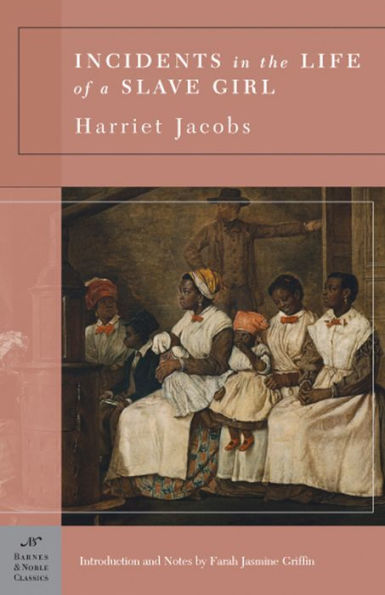- New introductions commissioned from todays top writers and scholars
- Biographies of the authors
- Chronologies of contemporary historical, biographical, and cultural events
- Footnotes and endnotes
- Selective discussions of imitations, parodies, poems, books, plays, paintings, operas, statuary, and films inspired by the work
- Comments by other famous authors
- Study questions to challenge the readers viewpoints and expectations
- Bibliographies for further reading
- Indices & Glossaries, when appropriate
In what has become a landmark of American history and literature, Incidents in the Life of a Slave Girl recounts the incredible but true story of Harriet Jacobs, born a slave in North Carolina in 1813. Her tale gains its importance from her descriptions, in great and painful detail, of the sexual exploitation that daily haunted her life—and the life of every other black female slave.
As a child, Harriet Jacobs remained blissfully unaware that she was a slave until the deaths of both her mother and a benevolent mistress exposed her to a sexually predatory master, Dr. Flint. Determined to escape, she spends seven years hidden away in a garret in her grandmother’s house, three feet high at its tallest point, with almost no air or light, and with only glimpses of her children to sustain her courage. In the face of seemingly insurmountable odds, she finally wins her battle for freedom by escaping to the North in 1842.
A powerful, unflinching portrayal of the brutality of slave life, Incidents in the Life of a Slave Girl stands alongside Frederick Douglass’s classic autobiographies as one of the most significant slave narratives ever written.
Farah Jasmine Griffin is Professor of English and Comparative Literature and African American Studies at Columbia University in New York City.
- New introductions commissioned from todays top writers and scholars
- Biographies of the authors
- Chronologies of contemporary historical, biographical, and cultural events
- Footnotes and endnotes
- Selective discussions of imitations, parodies, poems, books, plays, paintings, operas, statuary, and films inspired by the work
- Comments by other famous authors
- Study questions to challenge the readers viewpoints and expectations
- Bibliographies for further reading
- Indices & Glossaries, when appropriate
In what has become a landmark of American history and literature, Incidents in the Life of a Slave Girl recounts the incredible but true story of Harriet Jacobs, born a slave in North Carolina in 1813. Her tale gains its importance from her descriptions, in great and painful detail, of the sexual exploitation that daily haunted her life—and the life of every other black female slave.
As a child, Harriet Jacobs remained blissfully unaware that she was a slave until the deaths of both her mother and a benevolent mistress exposed her to a sexually predatory master, Dr. Flint. Determined to escape, she spends seven years hidden away in a garret in her grandmother’s house, three feet high at its tallest point, with almost no air or light, and with only glimpses of her children to sustain her courage. In the face of seemingly insurmountable odds, she finally wins her battle for freedom by escaping to the North in 1842.
A powerful, unflinching portrayal of the brutality of slave life, Incidents in the Life of a Slave Girl stands alongside Frederick Douglass’s classic autobiographies as one of the most significant slave narratives ever written.
Farah Jasmine Griffin is Professor of English and Comparative Literature and African American Studies at Columbia University in New York City.

Incidents in the Life of a Slave Girl (Barnes & Noble Classics Series)
272
Incidents in the Life of a Slave Girl (Barnes & Noble Classics Series)
272

Product Details
| ISBN-13: | 9781593082833 |
|---|---|
| Publisher: | Barnes & Noble |
| Publication date: | 03/28/2005 |
| Series: | Oz Series |
| Pages: | 272 |
| Sales rank: | 121,491 |
| Product dimensions: | 7.96(w) x 5.28(h) x 0.75(d) |
